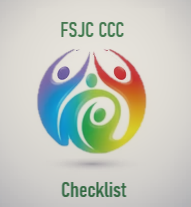Title Page
-
Site conducted
-
Conducted on
-
Inspected By
-
Accompanied By
-
Location
ENVIRONMENTAL SAFETY
-
Daily cleaning and sanitation procedures being followed and documented? <br>29 CFR 1910.141; 29 CFR 1926.51; 29 CFR 1928.110; OSHA guidance on Mitigating & prevention of COVID-19 updated 06-10-21
-
Safety board present with up-to-date information? CFR 29 1903
-
Safety signs posted as needed? CFR 29 1903
-
Free from clutter with materials properly stored safely to prevent fire, tripping or pest hazards? <br>29 CFR 1910.22; 29 CFR 1926.25; FSH 6709.11 38.33
-
Clean drinking water and containers provided (from a fountain or with individual drinking cups)?
-
Ventilation covers clean and adequate to prevent odors?
-
Waste containers clean and emptied as needed?
-
Spills cleaned up promptly?
-
Floors free from carpeting damage, holes or cracks (tripping hazards)? <br>29 CFR 1910.22
-
Ceilings free from damage or missing tiles?
-
Lighting fully functional and in good repair? <br>29 CFR 1910.269
-
Overhead lights working and protected from breakage? CFR 291910.269
-
Area free from damaged, worn or unsafe messaging?
RESTROOM FACILITIES
-
Are toilets and washing facilities clean and stocked with supplies (soap, towels, toilet paper)?
-
Are fixtures in toilets and washing facilities working and in good repair?
-
Is tilework clean and free from damage?
-
Are showers, sinks and toilets free from leaks?
STORAGE
-
Storage racks tightly assembled and free of sagging from overload or damage?
-
Storage areas kept free of tripping and fire hazards?
-
Materials stored to ensure liquids are kept below paper products?
-
Do employees have a safe way to stock and unstock the shelves?
-
Cleaning supplies properly labeled?
-
Mopping supplies properly cleaned and stored?
-
Materials stored to ensure liquids are kept below/away from paper products?
-
Universal waste stored properly, labeled and dated? 40 CFR part 273; FSH 6709-11 61.18
-
Flammable storage handled properly? (no combustibles or nonflammable items stored in cabinet. No items stored on cabinet. Plugs installed) 29 CFR 1910.106 29; CFR 1926.152 NFPA 30
-
Compressed gas is stored properly.
-
Oxy is separated from fuel source?
HAZARDOUS CHEMICALS
-
Eye wash stations serviceable, inspected, not blocked, signposted, tested weekly and signed off? <br>NFPA 101 ANSI Z358.1 Sec5.5.2; CFR 29 1910.132
-
Procedures in place and being followed for obtaining and returning hazardous chemicals?
-
Containers of hazardous materials clearly labeled with contents?
-
Chemicals stored according to the manufacturer’s recommendations and local/national fire codes.
-
Safety Data Sheets (SDS) available, up-to-date? Can students demonstrate their use?
-
Flammable or toxic chemicals kept in closed containers when not in use?
-
Personal protective clothing and equipment used (gloves, eye protection, etc.) when handling chemicals?
-
Signage prohibiting eating in areas where hazardous chemicals are present?
ELECTRICAL SAFETY
-
Extension cords used only for temporary use with correct voltage and rated for usage? <br>CFR 1910.269
-
Power cords free of splices, taps, and damaged insulation?
-
Electrical parts on tools, equipment, building wiring, and electrical panels enclosed to prevent contact?
-
Circuit overload occurring? If so why?
-
Breaker boxes clear and accessible?
-
Electrical cords and equipment used at wet locations have waterproof covers or seals to keep moisture out?
-
Outlets and covers in good condition with GFCI circuits used in wet locations? <br>CFR 1910.303(b)(1), 1910.304, 1926.404(b)(1), NEC Section 210.52
FIRST AID
-
First aid kit and BBP kit available and stocked using a list of required items? <br>1910.151(b), 1926.50( c ), ANSI/ISEA Z3-8.1, 1926.50(d)(1), PRH Exhibit 5-4
-
EPI Pen available? <br>1910.151 , 1926.50(d)(1), ANSI/ISEA Z3-8.1
-
AED machines inspected with unexpired batteries and pads? <br>1910.151 , 1926.50(d)(1), ANSI/ISEA Z3-8.1
EMERGENCY EVACUATION & EXITS
-
Occupancy loads posted with adequate exit discharge routes that lead outside? <br> 20 CFR 1910.36 (c)
-
Evacuation routes posted in each area with two-colored coding and in good repair? <br>29 CFR 1910.38(c)(2), PRH 5.1R17(b)(6)(7)
-
Exits clearly marked and doors that could be mistaken for a way of exit marked “Not an Exit” or with the name of the adjoining room?
-
Exits and exit paths clear and free of obstructions? <br>CFR 29 1910.36, 1910.37, NFPA 101
-
Emergency lighting properly illuminated? 29 CFR 1910.36, 1910.37, NFPA 101
-
Fire alarm panel functioning properly? <br>29 CFR 1910.164(b)(2), NFPA 72, PRH 5.1 R17(3)
-
Exits opened from the inside without a key?
-
Documented emergency evacuation drill within the last 30 days.
LADDERS
-
Ladder safety training? CFR 1910.23L
-
Ladder limited to temporary use? <br>H&SC 33.11
-
Ladders not being used are secured?
-
Portable rung ladders used to access elevated surfaces, ladder extends at least 3 feet above that surface? 29 CFR 1910.26(a)(1)(iii) 29 CFR 1910.26(a)(1)(iii
-
Ladders inspected for defects before use each day and after any occurrence that could damage the ladder? H&SC 33.11a; CFR 1910.23
-
Nonskid safety feet on all ladders except step ladders? 29 CFR 1910.25(d)(2)(xix)
WELDING, CUTTING, BRAISING
-
Are JHA's available and signed?
-
Fabrication and work area clean, orderly and free of combustibles?
-
Leads in good condition? CFR 1910.254
-
Rods removed when not in use? CFR 1910.254
-
Screens erected in high flash areas? CFR 1910.252
-
Blankets used as needed? CFR 1910252
-
Gas cylinders stored upright, secured and valves closed when not in use? CFR 1910.253(b(5)(ii)(C) and (D)
-
Gas cylinder storage areas secured? CFR 1910.253(b)(2)-253(b)(4)
POWER TOOLS AND EQUIPMENT
-
Guards properly affixed, in good repair and being used? CFR 1910.212
-
Power tools either grounded or double insulated? CFR 1910.213 (a)(11)
-
Impact tools heads dressed to avoid mushrooming?
-
Damaged and broken tools taken out of service?
-
Process for tool accountability with documented control logs? (tool crib)
-
Hoisting equipment used for lifting heavy objects, hoist ratings and conditions appropriate for the task? H&SC 42.1.11
-
Pneumatic and hydraulic hoses on power-operated tools checked regularly for deterioration or damage? H&SC 43.31.1.b
PERSONAL PROTECTIVE EQUIPMENT
-
Welding PPE in good condition and worn as required? (leathers etc.) CFR 29 1910.132
-
Hearing protection worn as required? CFR 29 1910.132
-
High noise areas warning signs posted? CFR 29 1910.132
-
Footwear in good condition, properly worn and appropriate for tasks being performed?
MACHINE GUARDING
-
Welding machines free from damage and have functional guards?
-
Machinery and equipment serviceable and properly maintained? H&SC 43.12 H&SC 43.51.19
-
Sufficient clearance around machines for safe operations, set up, servicing, material handling, and waste removal? 29 CFR 1910.213(s)(6) H&SC 39.74.5, 7
-
Equipment and machinery securely placed and anchored to prevent tipping or other movement that could result in personal injury? 29 CFR 1910.212(b) H&SC 39.74.4
-
Belts, pulleys, gears, shafts, and moving parts properly guarded? Guards and safety devices functional, adjusted, and in place? 29 CFR 1910.213(a)(9) 29 CFR 1910.219(d) 29 CFR 1910.219(e); H&SC 39.74.6; H&SC 39.74b.3
ABRASIVE WHEEL EQUIPMENT GRINDERS
-
Work rest used and kept adjusted to within 1/8-inch of the wheel? 29 CFR 1910.215(a)(4) H&SC 43.72.4
-
Adjustable tongue on the top side of grinder used and kept adjusted to w/i 1/4-inch of the wheel? 29 CFR 1910.215(b)(9) H&SC 43.72.6
-
Eye and hearing protection always worn when grinding? H&SC 43.71 H&SC 43.72.8
-
Abrasive wheels free from oil and properly dressed? H&SC 43.72.10
COMPRESSORS AND COMPRESSED AIR
-
Compressed air guns stamped to 35 psi?
-
Supply lines, hoses, and connections inspected regularly? H&SC 43.31
-
High pressure hoses and connections in good repair? H&SC 43.31
-
Drain valves opened frequently to prevent the accumulation of liquid in the tank? H&SC 43.21
-
Safety devices on compressed-air systems checked frequently? 29 CFR 1910.169(b)(3)(iv)
-
Tank drainings and safety valve checks maintained? H&SC 43.21
-
Compressors operated and lubricated according to manufacturer’s recommendations? H&SC 43.21
-
Signs posted to warn of the automatic starting feature of the compressors? H&SC 43.21
-
Is it strictly prohibited to direct compressed air toward a person? H&SC 43.31
LOCKOUT/TAGOUT PROCEDURES
-
Training provided to students and staff? 29 CFR 1910.147(c) H&SC 38.3.1.a
-
Lockout/tagout devices identifiable? 29 CFR 1910.147(c)(5)(ii)(D)
-
Tagout devices include a legend warning against hazardous conditions if the equipment is energized? 29 CFR 1910.147(c)(5)(iii)
EXTERIOR
-
General appearance weeded, clean and without clutter?
-
Outside trash containers clean and in good repair?
-
Sidewalks clean, free from hazards (snow/ice buildup) and in good repair?
-
Doors secure and in good repair?
-
Paint in good repair?
-
Are all the windows and screens intact and clean?
Sign Off
-
Name and Signature









